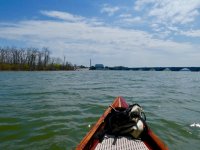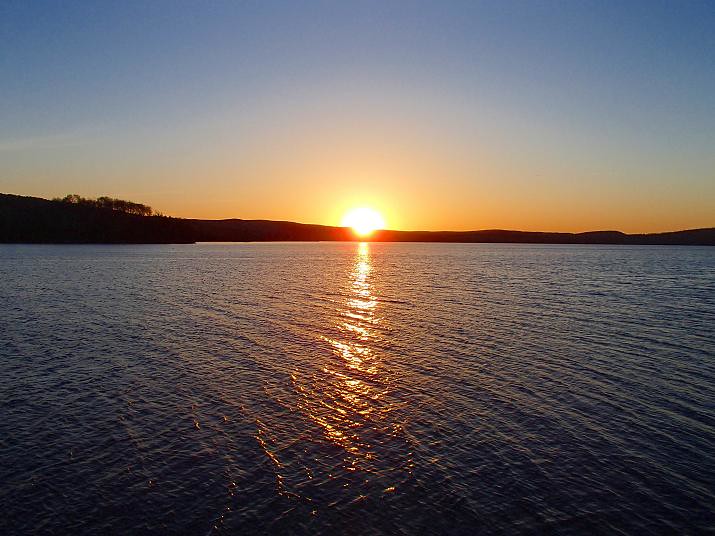Ignoring the effects of wave action, what is the maximum wind speed a couple of average Joe paddlers in a regular prospector style canoe can still make headway?
I can not recall many episodes of high winds with no wave effect, maybe a few times on serpentine riparian valley streams or on dense swamp trips, where the wind was whipping the tree tops but of little regard down on the water. And a Prospector hull would be my unlikeliest choice on a windswept trip.
Being Merican I had to convert the KMH to MPH. USA, USA, USA! And Myanmar and Liberia.
I think your estimate of 45-50 kph fits my experience. I've been in headwinds strong enough that I wondered if my paddle would break as I fought for every inch and I think the wind speeds were around 30-35 mph with gusts well over that.
A lot of things come into play in windy conditions, wave height generated, trim and exposed freeboard, decked canoe or spray cover, is there a place to hide before I am utterly exhausted, single blade vs double blade, effective wind ferry slip angle vs waves. Even how
fresh I am, and how much I need to make that distance today.
Wind direction and wave fetch distance count even more. A strenuous mile across a small lake may seem a reasonable effort (gamble).
The most sphincter puckered I have ever been in an open canoe was a 6 mile stretch down a long narrow lake. A narrow lake with fierce tailwind, and 20 miles of unobstructed of oops-unconsidered open fetch.
It took less than an hour, probably closer to 45 minutes. Seemed a lifetime; it was like surfing edge-of-disaster Atlantic breakers the entire ride.
The likeliest scenario there, my hastily considered
Plan A, after I was out in the oh-crap maelstrom, was
I will swim to shore, walk back to my truck, find the Hide-a-key and drive home alive but without canoe or gear. I have never been relieved to reach a take out, especially one tucked back in a calm, wind sheltered cove. I could not even extract myself from the canoe for some relieved minutes to kiss the gravel at the take out.
Up to 30 kmh/under 20 MPH I can still make good headway given an appropriate hull design. At 40 kmh/25 mph it is no fun and there better be an island to hide behind soon. At 50 kmh/30+ mph I better be in a decked canoe and a wave fetch of manageable height, and even so the wind is grabbing my feathered paddle blade every stroke, I really need to find some shelter to hide behind and rest, hydrate and fill calories and dammit this is just plain stupid.
Even if I can safely make reasonable headway I may meet with an unstoppable force beyond occasional wait-em-out gusts.
On a windy day on the Green just below Crystal Geyser a companion behind me called out
Hey, stop for a minute, I need to adjust my foot brace. I was in a fast/narrow section just ahead, in a decently strong current but with a stiff wind blowing white capped standing waves. When I stopped paddling I blew upriver backwards; not the most comforting position in standing waves with a day one of a three week trip in fully loaded canoe.
That spray covered canoe had an absurd amount of weight in it, including potable water, which did did nothurt with forward momentum as long as I kept paddling, but even well sunk in the current it was no match for the upriver wind when I stopped.
On a coastal trip, exiting a sheltered sneak route into an unfortunately V shaped embayment, I made decent if strenuous progress against the building wind and wave for a half mile or so. Until I came to what must have been the focal point of the funnel, where the wind speed and wave height reached a noticeably crescendo.
I needed to go but another hundred yards to an escape, and giving it 100% of what I had, with a double blade, in a decked canoe, it was just not possible. Paddling as hard as I could my progress was measured in inches (2.54 cm to the rest of the world) per minute. Not happening.
There was no turning 180 in the waves at that point of exposure. I had to delicately back out the half mile I had made, bow into the wind and waves. It was one time I really wished I had a rearview mirror on the Monarch.
In battling high winds having strategized a route with a place to hide (or give up) has become part of my decision making.



